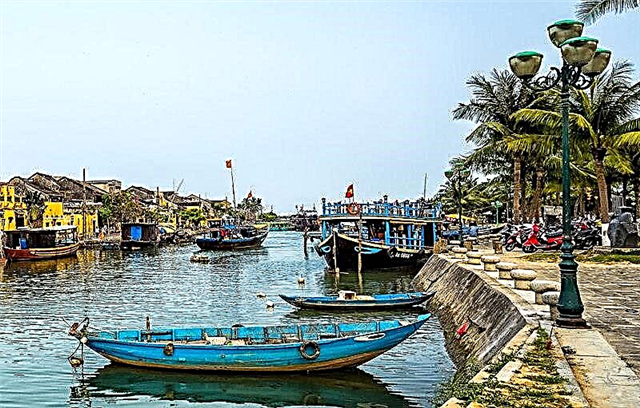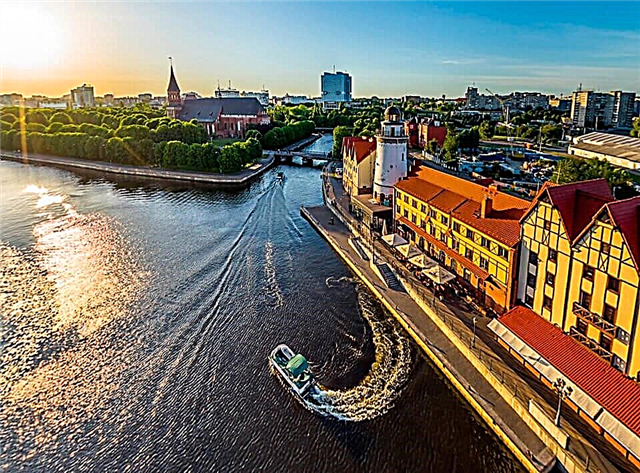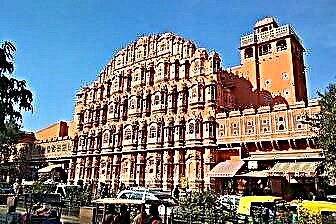The capital of the state of Rajasthan is known as the "pink city" - the facades of most historic buildings are terracotta pink in color. Along with Agra and Delhi, Jaipur is part of the Indian "golden triangle". This is a well-known tourist route that introduces the history and culture of the ancient state. In 1727, Jaipur became the first city in India, built not chaotically, but in accordance with the canons of the ancient Indian system of geometric space planning.
The most striking architectural sights are the Maharaja's City Palace, the Amber Fort Palace, the Hawa Mahal harem palace, the Jal Mahal lake castle, temple complexes, an ancient observatory. In addition, Jaipur has many craft shops and one of the busiest markets in the country. And in the spring, the city hosts an enchanting festival of elephants.

The best hotels and hotels at affordable prices.
from 500 rubles / day
What to see and where to go in Jaipur?
The most interesting and beautiful places for walking. Photos and a short description.
City palace
The luxurious residence of the Jaipur rulers is an architectural ensemble of palaces, pavilions, temples and lush gardens. Construction began in 1729. All buildings are richly decorated with frescoes, carvings, inlays, arches, statues and are connected to each other by patios, corridors or terraces. The museums on the territory of the complex keep collections of weapons, ancient manuscripts, miniatures and paintings, Mughal carpets and clothing. Part of the complex still belongs to the heirs of the royal family.

Hawa Mahal
The wondrous creation of Indian masters - the Palace of the Winds - is located in the very center of Jaipur and is part of the palace complex, or rather, a building for a harem. It was built in the 18th century from red and pink sandstone. According to the architect's idea, the castle is made in the form of Krishna's crown. Its front part contains 953 windows, decorated with graceful patterned grilles. Through them, the wives of the maharaja could freely observe city life, without fear of being seen.

Fortress-palace Amber
A building on a hill, 11 km from Jaipur, an impregnable fortress and at the same time a graceful architectural masterpiece, created from red sandstone and snow-white marble. Built in the 16th century, it is surrounded by a wall of many kilometers. It is a luxurious palace complex with four isolated courtyards, gardens and a lake, castles and temples. Among the most beautiful buildings are the Mirror Palace, the Victory Palace, the Divan-i-Am audience pavilion. You can get to the fort on horseback on elephants.

Jaigarh fort
Located on a high cliff, next to the Amber Fort. It has a length of 3 km. It was erected in 1726 to protect Amber and the palace ensemble inside. Both forts represented a single complex and were connected by underground passages. On the territory of the fortress there is a garden, the Armory with a collection of swords, cannons and muskets, the Hall of Warriors and a museum. The main attraction is the world's largest cannon on wheels, Jaivan, made within the walls of the fort.

Fort Nahargar
Another part of the city's defense system. Located on a high hill, 6 km from Jaipur. The date of foundation is 1734. Never been attacked. In the 19th century, a palace was erected on the territory of the fortress for the ruler of Jaipur. The fortress walls with loopholed windows, cannons have been preserved; wall paintings, frescoes and stained-glass windows are preserved in the castle. The entire city is clearly visible from the rooftop terraces of the fort. There is a cafe in the corner tower. There is a wax museum at the entrance.

Jal Mahal
A mesmerizing sight opens on the way to the Amber Fort - a magnificent palace in the middle of an artificial lake. The magnificent structure can only be admired from the shore, as it is closed for tourists. The castle was built as a summer residence of Indian rulers in the 18th century. As a result of the construction of the dam, which saved the city from drought, the picturesque valley, along with the castle, were under water. Today, 4 out of 5 floors are flooded, and there is no way to get inside the building.

Jantar Mantar
National Monument, UNESCO Heritage Site. The largest and well-preserved of the 5 observatories built in India by order of one of the Maharaja. It consists of 14 huge measuring structures-instruments, which in ancient times determined the time, the distance to the heavenly bodies, predicted the weather, etc. The sundial in this observatory is the largest in the world, has a diameter of 27 meters and still shows the correct time ...

Monkey Temple
One of the most interesting temple complexes in India. Located in a narrow crevice between the rocks, 10 km from Jaipur. It consists of a temple dedicated to the god of primates, the temple of the sun god and two sacred baths, which are filled with spring water from the mountain peaks. Pilgrims come here to bathe. The local inhabitants are a large population of monkeys, behaving like full-fledged owners. Nearby you can buy nuts and fruits to feed the animals.

Birla Mandir temple
A majestic white marble structure. It looks especially beautiful in the evening, in the rays of special illumination. The construction was carried out in 1985 at the own expense of the Birla family of Indian industrialists. It symbolizes the unity of India and all religions; on the walls you can see images of Hindu deities, as well as the Madonna and Jesus. The temple is decorated with numerous arches, galleries, elegant staircases, towers, porticoes, sculptural compositions. There is a small park nearby.

Mochi Dungri Temple
One of the largest and most visited temples dedicated to the wise god Ganesha. It was built of marble and limestone in 1761. Located on a hill, surrounded by the magnificent Moti Dungri Castle, which, unlike the temple, is closed to the public. The walls of the temple are engraved with images of mythological characters; its three domes symbolize the three religions of India. There is a large statue of Ganesh in the center of the temple complex. On Wednesdays, fairs are held in honor of the deity.

Albert Hall Museum
Located in the Ram Niwas garden. The oldest museum in the state. Construction began in 1876 on the occasion of the Prince of Wales' visit to the country. It keeps in itself unique collections of paintings, weapons, jewelry, pottery, bright textiles, luxurious Persian carpets, ceramics, metal, ivory, crystal. Of interest are the gallery of music and dance and the gallery dedicated to henna painting. The building of the museum is a real architectural masterpiece in the Indo-Saracen style.

Anokha Hand Printing Museum
This is not only a museum, but also a creative workshop in which artists are engaged in an ancient craft - hand-dyeing fabrics. Visitors are shown old cliches for printing, the whole process of drawing a picture on a fabric base. Those interested can join the creation of colorful textiles. Many things - towels, tablecloths, shirts - can be purchased at the store. The price for them is low, and the quality is excellent, moreover, they are all made in a single copy.

Jawahar Kala Kendra
A multidisciplinary arts center dedicated to preserving and promoting the folk art and rich handicraft heritage of Rajasthan. The building was designed by the architect C. Correa in accordance with the concept of 9 squares, each of which is associated with a specific planet. Dedicated to the memory of Jawaharlal Nehru, the great leader of the Indian nation. There are several art galleries, museums, workshops, an amphitheater, a guest house, a library, a cafe on the territory of the complex.

Raj mandir cinema
The building of the Art Nouveau cinema was erected in 1976.One of the most popular tourist attractions in Jaipur. It is famous for its huge size and luxurious interiors reminiscent of a royal palace. This architectural wonder was awarded the title of "Pride of Asia". The hall is designed for 1300 people, the spectator seats are divided into 4 categories according to the level of comfort - pearl, emerald, ruby, diamond. The screen is draped with heavy velvet curtains.

Choki Dhani village
Once on the territory of this folk village, tourists have the opportunity to get to know more about the life and cultural traditions of the local population. A wide entertainment program is offered - music and dance, puppet shows, shadow theater, magic shows, camel riding, oxen and boat rides. Guests are sure to be treated to a specific dinner prepared according to ancient recipes. There are souvenir shops in the village, masters of henna and clay painting work.

Royal tombs
One of the little-known attractions of Jaipur. A walled burial complex consisting of temples and tombs of the Maharajas. Located at the foot of the Nahargarh Fort. Quiet and very beautiful place. All buildings are made of white marble with intricate carvings. They are dominated by the grandiose cenotaph of the ruler Madho Singh II, who died in 1922. Also impressive is the more ancient tomb of the founder of Jaipur and its first ruler, Jai Singh II.

Panna Mina Ka Kund
There are few rivers in Rajasthan, and in the heat they dry up altogether. Therefore, in ancient times, local residents accumulated rainwater in deeply dug wells. One of these buildings was built in the 16th century. It does not at all look like a banal well, but is a fairly large-scale architectural object. It consists of numerous alternating staircases that lead down to the pool and seating niches carved into the walls. It is located in the village next to the Amber Fort.

Chand Baori
One of the oldest and deepest step wells in the country. Located 95 km from Jaipur, in the town of Abaneri. Built in the 9th-11th centuries. The total depth is 30 meters, 10 meters are filled with water. It is shaped like an inverted pyramid. The descent to the water consists of 13 stone terraces with 3500 steps. It is a sacred place for pilgrims to wash their hands and feet before entering a nearby temple. But today, swimming and drinking water is strictly prohibited. In the niches of the walls, there are sculptures of the deities Durga and Ganesha.

Elefantastik
This is an entertaining farm where Indian elephants live. They are treated very respectfully here, they are kept in excellent conditions. A visit to the farm includes close contact with the animals. You can ride them, feed them, swim together in the pond. Drawing on the body of elephants with special paints is very popular. At the end of the excursion, visitors are invited to the house of the owners of the farm and treated to a delicious lunch consisting of Indian dishes.

Elephant festival
One of the most colorful parades takes place in Jaipur in late February - early May. Elephant owners spend a lot of money and time to decorate their pets as brightly as possible. They cover them with patterns, luxurious robes and gold ornaments. The elephant is a symbol of wealth. Animals, only female elephants, participate in the parade, play polo, compete in running and tug-of-war with men. The festival is accompanied by fairs and performances by local artists.












